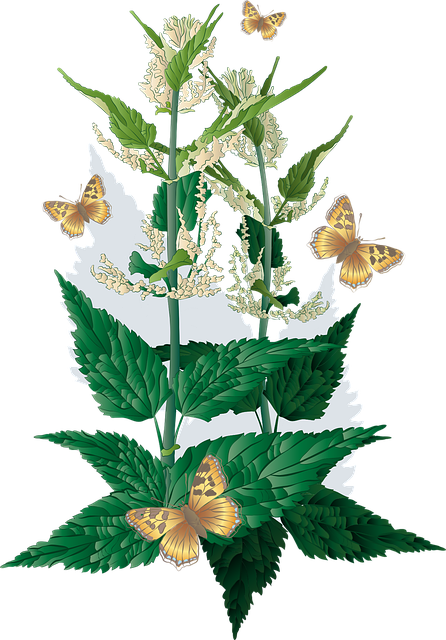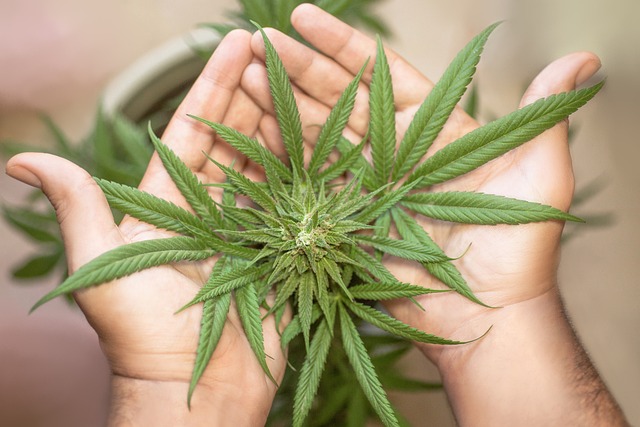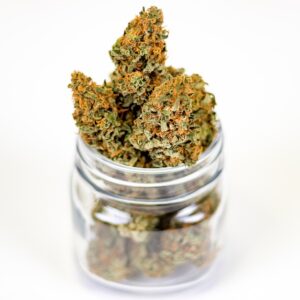
THCA flower lab reports are essential for consumers looking to understand the chemical composition and potential therapeutic effects of this non-intoxicating cannabinoid found in cannabis. These reports provide detailed information on THCA levels alongside other cannabinoids like CBD and CBN, as well as terpene profiles that influence the plant's effects. They also ensure safety by detailing the absence of harmful contaminants such as residual solvents, pesticides, and heavy metals. By examining these lab results, users can anticipate the flower's effects, manage potential side effects, and make informed choices that align with their health needs. It is important to consult a healthcare professional before using THCA flower, given its legal status and the need for more research to fully understand its efficacy. The data from these lab reports highlight the promising potential of THCA flower in therapeutic applications, making them an indispensable tool for ensuring both safety and effectiveness in cannabis products.
Exploring the multifaceted effects of THCA flower, this article sheds light on its potential side effects as detailed in lab reports. Delving into the scientific aspects that govern health and well-being, we aim to clarify the impact of this cannabinoid-rich compound. With a focus on interpreting THCA flower lab reports for safety and efficacy, readers will gain valuable insights to navigate its nuances responsibly. Join us as we uncover the facts behind this emerging topic in cannabinoid research.
- Unraveling THCA Flower Lab Reports: A Comprehensive Analysis of Potential Side Effects
- The Science Behind THCA Flower: Understanding Its Impact on Health and Well-being
- Navigating the Nuances: How to Interpret THCA Flower Lab Reports for Safety and Efficacy
Unraveling THCA Flower Lab Reports: A Comprehensive Analysis of Potential Side Effects

Laboratory analyses play a pivotal role in characterizing the potential effects of THCA flower, which is the raw form of tetrahydrocannabinolic acid, a prominent cannabinoid found in the Cannabis sativa plant. Examining THCA flower lab reports offers insight into the compound’s properties and its interaction with the human body. These reports detail the presence and concentration of various cannabinoids, terpenes, and other chemical constituents that can influence the experience and effects when consumed. It is imperative for consumers to scrutinize these lab analyses to understand the specific composition of their THCA flower, as this can significantly affect its side effects. For instance, lab reports will identify the concentration of THCA, which, unlike its psychoactive counterpart THC, does not induce intoxication but may have therapeutic benefits. Additionally, these reports can pinpoint other cannabinoids like CBD and CBN, which may offer different health implications and side effects. Users should be cautious and consider the full spectrum of compounds present in their THCA flower, as even minor variations can alter its potential side effects, ranging from mild, such as dry mouth or red eyes, to more severe ones if misused or combined with other substances. It is through a thorough examination of these lab reports that users can make informed decisions, optimizing the therapeutic benefits and mitigating any adverse reactions associated with THCA flower consumption.
The Science Behind THCA Flower: Understanding Its Impact on Health and Well-being

Laboratory reports on THCA (Tetrahydrocannabinolic Acid) flower have shed light on its potential impacts on health and well-being, providing valuable insights into its pharmacological effects. THCA is the raw form of THC (Tetrahydrocannabinol), which is the primary psychoactive component found in cannabis. Initial studies suggest that THCA may offer therapeutic benefits without the psychoactive side effects associated with THC when it’s decarboxylated—converted into THC through heating. Researchers have observed various biological activities linked to THCA, including anti-inflammatory and pain-relieving properties, which could be beneficial for conditions such as arthritis or chronic pain. These findings are supported by preclinical evidence indicating that THCA may influence endocannabinoid system receptors without eliciting a ‘high’, potentially making it a promising candidate for therapeutic applications.
Furthermore, the science behind THCA flower extends to its potential effects on human health and well-being. THCA’s interaction with the body’s endocannabinoid system suggests it may modulate various physiological functions. Lab reports have also pointed to its neuroprotective and anti-nausea properties, which are under investigation for their relevance in conditions like multiple sclerosis and chemotherapy-induced nausea. However, due to the plant’s legal status varying by region, extensive research is still needed to fully understand THCA’s efficacy and safety profile. As such, while promising, the use of THCA flower should be approached with caution and within the confines of the law, emphasizing the importance of consultation with healthcare professionals before incorporating it into any health regimen.
Navigating the Nuances: How to Interpret THCA Flower Lab Reports for Safety and Efficacy

When exploring the potential of THCA (Tetrahydrocannabinolic Acid) flowers, understanding the intricacies of lab reports is paramount for ensuring both safety and efficacy. These lab reports provide a comprehensive analysis of the THCA flower’s cannabinoid profile, including its THCA content, which is the precursor to THC (Tetrahydrocannabinol), the psychoactive compound found in cannabis. A detailed report will offer insights into additional cannabinoids like CBD (Cannabidiol) and CBN (Cannabinol), as well as terpenes, which contribute to the plant’s effects and aromas. It’s crucial to examine these reports carefully, focusing on the concentration of each compound, as this information dictates the flower’s potential therapeutic benefits and its psychoactive potency.
Furthermore, a thorough lab report should detail the presence of residual solvents, pesticides, heavy metals, and other contaminants that could pose health risks. Safety data is as important as efficacy information when determining the quality and safety of THCA flowers. Consumers should look for a Certificate of Analysis (CoA) from an accredited laboratory, which will include a breakdown of cannabinoid percentages, terpene profiles, and a contaminant screen. This due diligence ensures that users make informed decisions, aligning with their desired effects and health considerations. Interpreting THCA flower lab reports requires a blend of discernment and scientific knowledge, guiding users to select products that meet their specific needs and adhere to high standards of quality.
In conclusion, the exploration of THCA flower lab reports through a scientific lens has shed light on its potential effects and how these can be interpreted for safety and efficacy. The comprehensive analysis presented in “Unraveling THCA Flower Lab Reports: A Comprehensive Analysis of Potential Side Effects” underscores the importance of understanding the impact of THCA flower on health and well-being, as detailed in “The Science Behind THCA Flower: Understanding Its Impact on Health and Well-being.” With the guidance offered in “Navigating the Nuances: How to Interpret THCA Flower Lab Reports for Safety and Efficacy,” consumers can make informed decisions about its use. It is clear that while THCA flower may offer various benefits, it is not without potential side effects, which must be carefully considered. For those interested in exploring the properties of THCA flower, a cautious and informed approach, supported by thorough lab reports, is essential.







